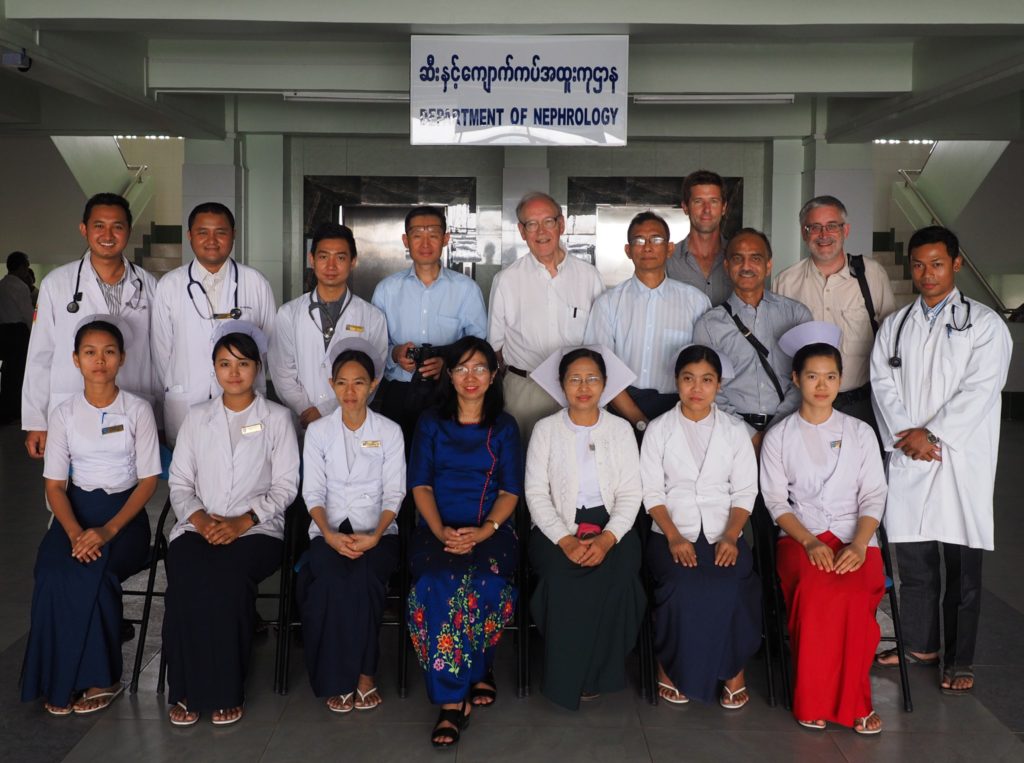Solving the Snakebite Puzzle

Worldwide, at least 100,000 people will die each year from snakebites.
This is a frightening statistic and while the rate of deaths from snakebites in Australia is extremely low, Royal Adelaide Hospital (RAH) Emergency Physician and Toxicologist Dr Sam Alfred wants to make a difference in this area.
Through research he intends to grow knowledge in snakebite management in a bid to improve clinical management and reduce deaths across the globe.
Dr Alfred is part of the Myanmar (Burma) Snakebite Project, supported by the Australian Department of Foreign Affairs and Trade (DFAT) over three years in partnership with Australian antivenom producer, Seqirus (previously bioCSL), The University of Adelaide and the Myanmar Government. This international project is aimed at saving the lives of those who die each year from venomous snakebites in the South-East Asian nation of Myanmar.
Through his involvement with this aid project, Dr Alfred and his colleagues uncovered a number of unanswered questions about the management of antivenom in a clinical setting, which has led to research.

A number of the dedicated individuals working on the Mynamar Snakebite Project including Dr Sam Alfred and his Australian colleagues.
“I was so appreciative to receive funding from the RAH Research Fund for my proposed research project, which is now looking at the relationship between coagulation (blood clotting) screening and the presence of venom in the serum of a patient who has been bitten by a snake,” Dr Alfred said.
“The current situation for clinicians when someone presents to hospital with a snakebite is to try and determine if they have venom in their blood and giving these patients antivenom.”
Dr Alfred explains that based on the current research and available literature, anywhere between 30 to 50 per cent of snakebites are dry bites, which produce no detectable envenoming in the patient.
“This presents a bit of a problem because we don’t have a method of accurately identifying a patient with venom in the blood stream – you can’t test for venom directly,” said Dr Alfred.
“You also can’t give anti-venom to everyone because it can potentially have quite serious side effects. Currently we use a screening process to try and identify which patients are likely to have venom in their bloodstream through indirect findings – like assessing for blood clotting abnormalities which are a common manifestation of envenoming post snakebite.”
Dr Alfred says a lot of snakebites will trigger responses in the body that consume all of your blood clotting factors, so that you can’t form any more blood clots. This results in a bleeding abnormality.
“There is an assumption that if you find the bleeding abnormality, there must be venom in the patient,” he said.
“However, it’s not entirely clear this is true because we don’t have a solid understanding of how long venom stays in the blood stream and it seems this bleeding abnormality probably persists longer than venom is present. This means we don’t really know if it’s true that finding a blood clotting abnormality means you should give your patient antivenom.”
Given the limited solid data on these issues, Dr Alfred’s project will assess this process in snakebite patients, looking at the detection and relationship of envenoming (the process of a snake injecting venom into a patient) and its implications for snakebite management.
He explains that in an Australian setting, samples are sent to a laboratory where sophisticated blood clotting tests can be coordinated. These are not available in the vast majority of third world countries where these types of snakebites are common – they need an alternative method.
“In these sorts of third world settings, clinicians will put a little bit of blood into a glass test tube for 20 minutes and then tip it upside down to assess for the formation of a blood clot that would normally be expected to form during this timeframe –it’s a useful test referred to as the 20 minute whole blood clotting test, but it’s by no stretch of the imagination perfect,” Dr Alfred said.
His research project will examine the relationship between this test and the more sophisticated clotting tests used in Australia.
“We’re aiming to collect samples from patients in Myanmar and bring them to Australia and test what the formal clotting assessment is and look at the correlation between the whole blood clotting time and the more sophisticated test to try and analyse that relationship.
“Then we’ll be looking at ways to detect venom in the plasma with various technologies on offer. If we’re able to detect specific venom components and to look at things like whether the venom is affected by the anti-venom that’s been administered, it gives us a means by which we can evaluate the traditional testing approach.
“We’re also looking at South Australia, so looking at also enrolling snakebite patients at the Royal Adelaide as well for this project.”
Dr Alfred is thankful for the community support through the RAH Research Fund and is optimistic about delivering some very useful clinical information about the value of the screening tests currently used and the timeframe venom stays in the human bloodstream.
“That’s very useful clinical information that will make a big difference to how patients are treated pretty quickly!”
We look forward to giving you an update on this international research in the near future and wish Dr Alfred all the best with gathering samples and conducting his study!






